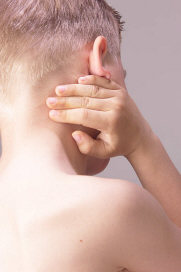Autism and Chiropractic, Studies Hold Hope
 Two
separate papers published in two scientific journals hold hope for children
with autism through chiropractic care. One paper published in the
March 2006 issue of Clinical Chiropractic reviews past studies on
chiropractic and Autism. This paper recounts in clinical studies where
children with autism are helped with chiropractic care. Most of the
studies reviewed speak of problems in the upper cervical (neck) spine. Two
separate papers published in two scientific journals hold hope for children
with autism through chiropractic care. One paper published in the
March 2006 issue of Clinical Chiropractic reviews past studies on
chiropractic and Autism. This paper recounts in clinical studies where
children with autism are helped with chiropractic care. Most of the
studies reviewed speak of problems in the upper cervical (neck) spine.
In addition to the Clinical
Chiropractic paper, a study published in the March 9, 2006 Journal of
Vertebral Subluxation (JVSR) compares two groups of children with autism and
their response under chiropractic care. In this study 14 children diagnosed
with autism were studied undergoing chiropractic care. Seven of these children
received one form of chiropractic adjustments focusing on the entire spine
while the other seven received a form of chiropractic adjustment focusing on
the upper cervical spine.
The children in this study
were diagnosed with autism at the Child Evaluation Center at the University
of Louisville Medical School. The evaluation of any progress made was
done by using the Autism Treatment Evaluation Checklist (ATEC) created by
the researchers at the Autism Research Institute of San Diego, California.
According to the JVSR study, the ATEC is a one-page questionnaire designed
to be completed by parents, teachers, or caretakers. It consists of 4
subsets: I. Speech/Language Communication (14 items); II. Sociability (20
items); III. Sensory/Cognitive Awareness (18 items); and IV.
Health/Physical/Behavior (25 items).
Each of the children in this
study were scored according to the ATEC evaluation. Then, twice each
week for the following 3 months, the children were checked and adjusted as
indicated. Follow up ATEC evaluations were performed each month to monitor
the progress.
The results showed that
improvement of ATEC scores occurred in six of the seven children under upper
cervical adjustment and in five of the seven children under full spine
adjustment. The children in the upper cervical group did show greater
score improvements overall. In this group, two of the children improved so
much that they no longer met the criteria to be classified as autistic.
Overall, the study noted that the most common clinical aspects of improvement
were in communication, verbal skills, eye contact, mood, and physical sport
skills. |
 Home
Search This Site
Chiropractic Articles
Home
Search This Site
Chiropractic Articles
 Home
Search This Site
Chiropractic Articles
Home
Search This Site
Chiropractic Articles